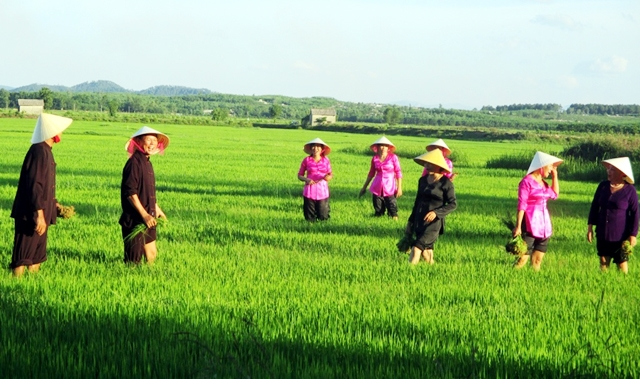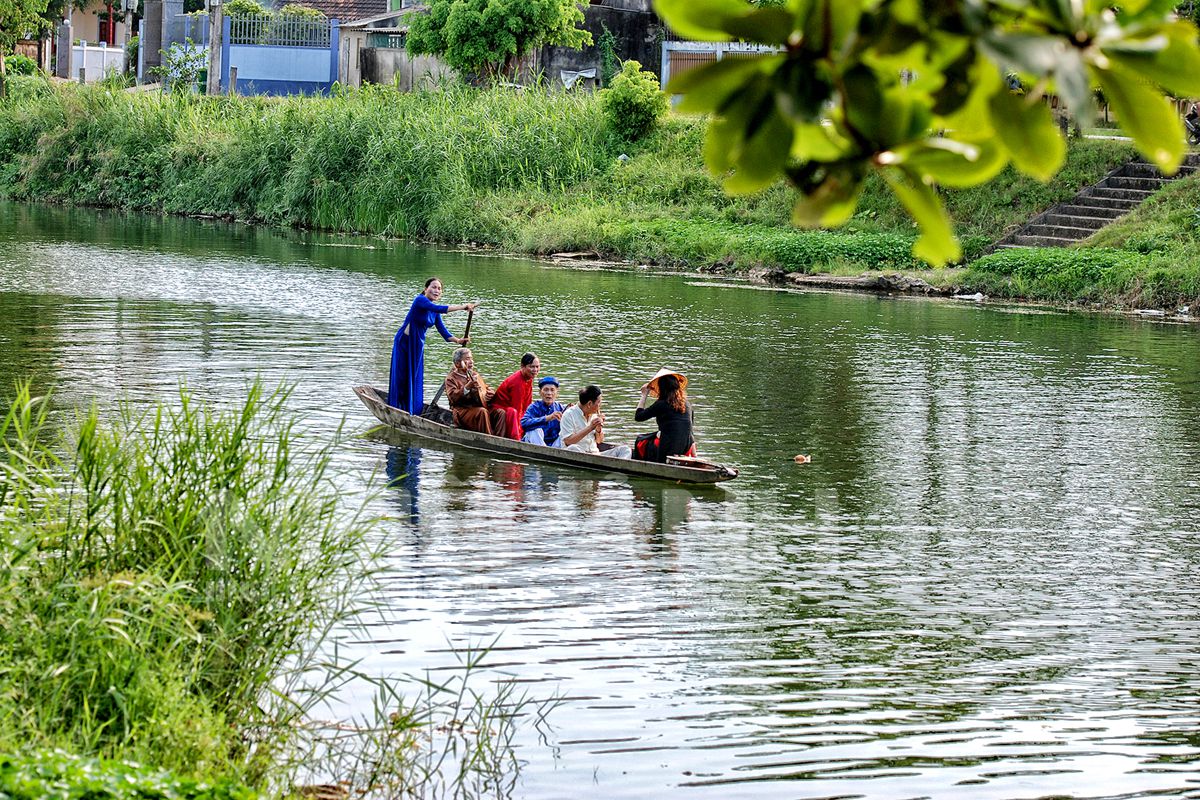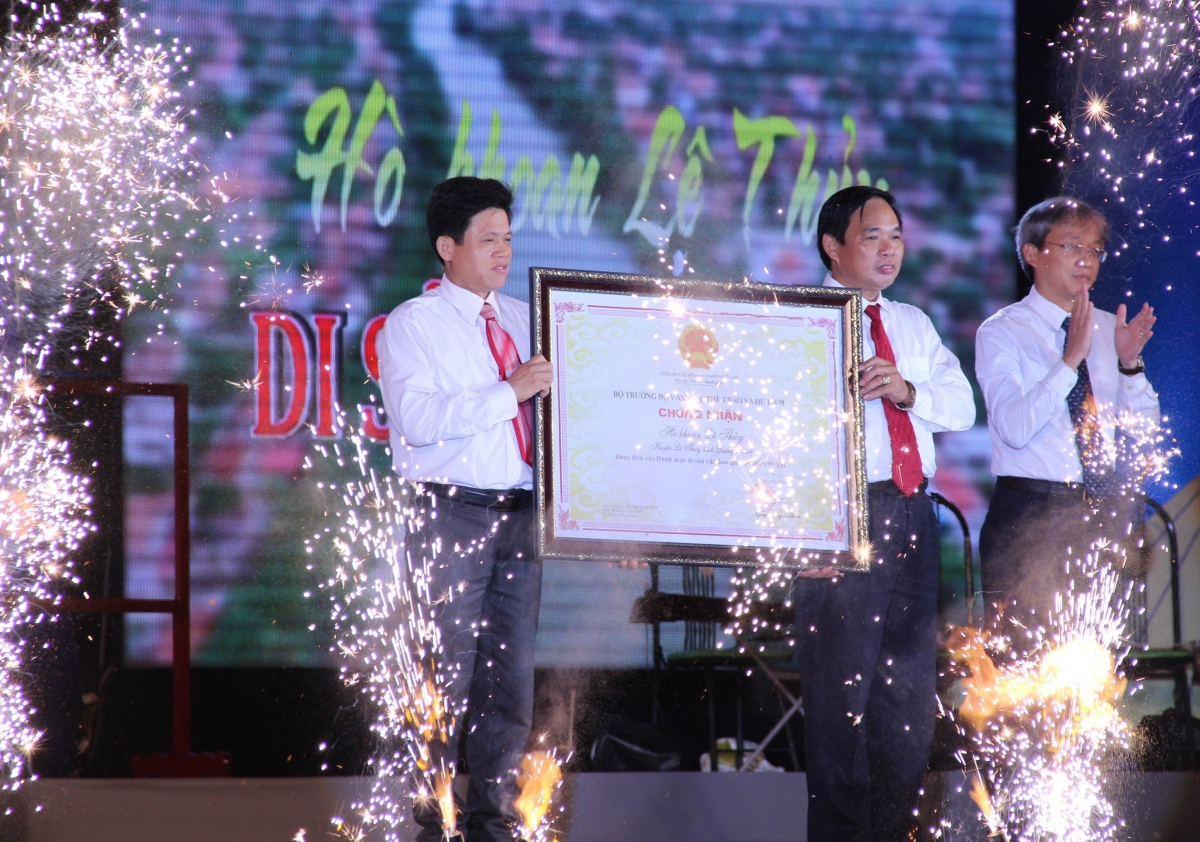"Ho Khoan" Le Thuy - A Unique Cultural heritage of Quang Binh
Quang Binh is a place known for its remarkable natural landscapes and also for preserving a diverse and unique collection of intangible culturalheritage.These heritages, expressed through customs, community activities, traditional arts, and various types of culture, are symbols of the cultural identity of the local people.
One of the unique National Intangible Cultural Heritages of Quang Binh is “Ho Khoan” Le Thuy, which is a typical folk song form of Le Thuy land. It has a deep and profound sound that expresses the thoughts and emotions of the working people.

The “Ho khoan” Le Thuy is a form of folk music that originated in the Le Thuy region of Quang Binh, Vietnam in the 15th century. Originally, it consisted of simple songs sung by working people while performing daily activities such as rowing boats or pounding rice. Over time, it evolved into a unique art form that expresses the soul and life of the people in this region.
The “Ho Khoan” Le Thuy consists of nine main chants, each with its own structure, melody, and content. These chants are named after different types of roofs, such as the Lua Trau, Jasmine Roof, Stretch Roof, Tea Roof, Rammed Roof, Triple Roof, Folded Roof, Roof of Ho Khoi, and Roof of Nau Tattoo. The term "hò" can be translated "heave-ho!" and is a generic call in labouring songs, ''khoan" means to row. The refrain "khoan khoan hò khoan!" ("row-row! ho! row!") references rowing. The song is characterized both by its antiphonal nature, with alternating groups of female and male singers issuing musical challenges and responses, and by the fact that most of the songs in the repertoire deal with topics of love and sentimentality as experienced by young adult.

The “Ho khoan” Le Thuy is a popular song that is often sung back and forth between men and women. The male singer typically starts by introducing his hometown, family, and expressing his feelings. The female singer responds with witty sentences that show shyness but also intelligence and sharpness.
The "Ho Khoan" Le Thuy is a form of folk music that uses simple and rustic language commonly spoken by working people. The songs often touch upon familiar subjects such as love for the homeland, country, family, couples, and the beautiful scenery of the homeland.
The main musical instruments used in Le Thuy folk music are Vietnamese two-chord fiddle and Mo. When these two instruments are played together, the sound is gentle, deep, and very affectionate. The instruments produce a rustic and close village sound, making each melody sung as stirring as the heart of a Vietnamese village.

The "Ho Khoan" Le Thuy is not only an art form but also an indispensable part of the spiritual life of the people of Quang Binh. It represents the soul, personality, and cultural values of the people in this region.

The "Ho Khoan" Le Thuy was officially recognized as a National Intangible Cultural Heritage by the Ministry of Culture, Sports and Tourism in 2017. This recognition was given due to the unique cultural and artistic value of this art form.

Nowadays, “Ho Khoan” Le Thuy is performed in various festivals, cultural and tourist events in Quang Binh province. However, “Ho Khoan”Le Thuy is slowly disappearing due to various reasons, such as the influence of modern society and foreign cultures. Therefore, preserving and promoting Le Thuy cairn has become an urgent matter.
To preserve “Ho Khoan” Le Thuy, we need to implement several solutions, such as organizing training classes to the younger generation, arranging competitions and dance performances to encourage participation, integrating dance into cultural and tourism activities, and developing programs and projects to preserve and promote “Ho Khoan” Le Thuy.
The “Ho khoan” Le Thuy is a cultural heritage that needs to be protected and promoted. It is an essential part of the spiritual life of the people in Quang Binh and a national intangible cultural heritage. Preserving and promoting the value of these heritages is a shared responsibility of the community, contributing to preserving cultural identity and promoting local tourism development.
